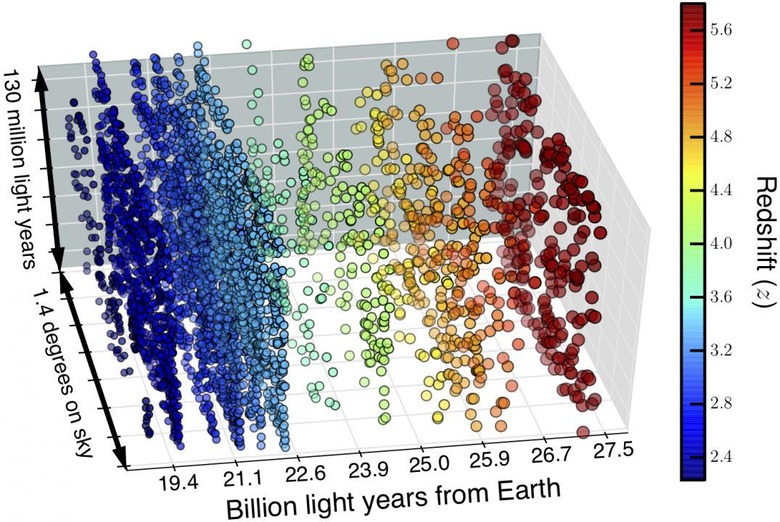Scientists Unveil One Of The Largest 3D Maps Of The Early Universe
Astronomers have been working on a massive 3D map of what they call the infant universe. The map was unveiled in Europe by a team led by Dr. David Sobral of Lancaster University. The giant map was made using the Subaru Telescope in Hawaii and the Issac Newton telescope in the Canary Islands.
The map is a literal look back in time to 16 different epochs between 11 and 13 billion years ago. The researchers discovered nearly 4,000 early galaxies in their study, many of them are believed to have evolved into galaxies like our own Milky Way. If you are wondering how a map of the modern sky could be a look back in time, consider this.
It takes billions of years for the light from the most distant galaxies to reach Earth where scientists can view and study it. By the time we see the light from these galaxies, they are vastly different than how they are in this ancient light we currently observe. Scientists say that the light of these galaxies is also stretched by the expansion of the universe making the light redder. This is called redshift and helps determine the distance from us that the galaxy that created the light is.

The team used special filters to sample particular wavelengths of light and specify the epochs in the history of the Universe the galaxies are from. The team used lots of data taken from 16 special filters on wide field cameras and processed that data. One thing the team discovered is that the early galaxies seem to have had more so-called "bursts" when they formed stars rather than forming stars at a steady rate like our galaxy.
The galaxies the team discovered existed when the Universe was only 20 to 7% of its current age. That gives critical information about the early phases of galaxy formation. The scientists also note that the galaxies are very compact at only about 3,000 light years across. The Milky Way is about 30 times larger.
SOURCE: Eurekalert
